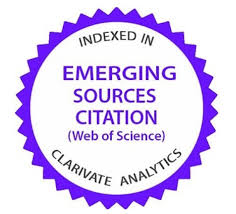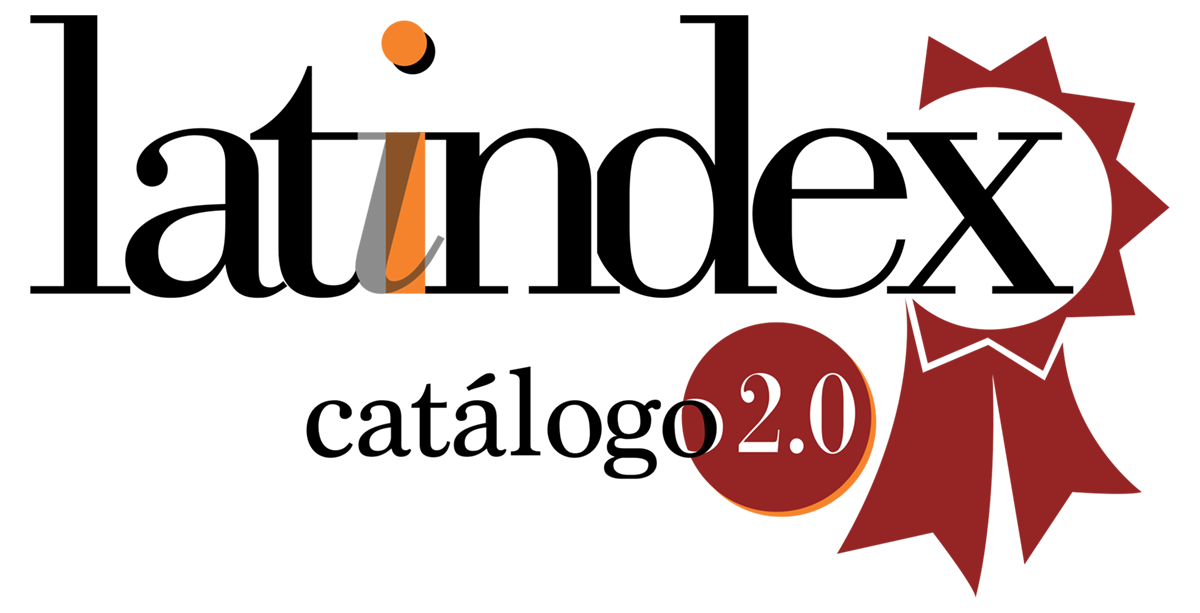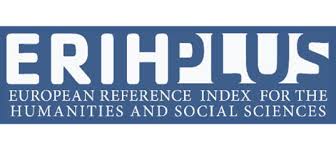Storytelling Rituals in Jury Deliberations
DOI:
https://doi.org/10.35295/osls.iisl/0000-0000-0000-1038Palabras clave:
deliberación del jurado, emociones, narración, sentido común, ritualResumen
La investigación sobre la deliberación del jurado tiende a centrarse en los resultados de esa deliberación, como pueden ser los veredictos. Menos atención genera el proceso mismo de deliberación. Este artículo analiza una grabación de vídeo de la deliberación de un jurado en un simulacro de juicio penal, y se fija especialmente en las expresiones faciales, los gestos y los discursos. Basándome en la etnometodología y en teorías de ritual microsociológicas, examino la forma en que los jurados buscan el sentido de las pruebas que se les presentan y la forma en que trabajan juntos para producir una narración coherente de los hechos. Argumento que poner el énfasis en las dinámicas rituales de la deliberación ayuda a entender cómo se realiza esa producción colectiva.
Descargas
Metrics
Estadísticas globales ℹ️
|
695
Visualizaciones
|
633
Descargas
|
|
1328
Total
|
|
Citas
Atkinson, J.M., and Heritage, J., eds., 1984. Structures of Social Action: Studies in Conversation Analysis. Cambridge University Press.
Bennet, W.L., and Feldman, M., 1981. Reconstructing Reality in the Courtroom: Justice and Judgment in American Culture. New Brunswick, NJ: Rutgers University Press.
Bornstein, B.H., 1999. The ecological validity of jury simulations: Is the jury still out? Law and human Behavior [online], 23(1), 75-91. Available from: https://doi.org/10.1023/A:1022326807441 [Accessed 24 May 2019]. DOI: https://doi.org/10.1023/A:1022326807441
Bornstein, B.H., and McCabe, S.G., 2005. Jurors of the absurd-the role of consequentiality in jury simulation research. Florida State University Law Review [online], 32(2), 443. Available from: https://ir.law.fsu.edu/lr/vol32/iss2/7 [Accessed 24 May 2019].
Bornstein, B.H., et al., 2017. Mock juror sampling issues in jury simulation research: A meta-analysis. Law and Human Behavior [online], 41(1), 13. Available from: https://doi.org/10.1037/lhb0000223 [Accessed 24 May 2019]. DOI: https://doi.org/10.1037/lhb0000223
Brown, K.R., 2011. Interaction ritual chains and the mobilization of conscientious consumers. Qualitative Sociology [online], 34(1), 121-141. Available from: http://dx.doi.org/10.1007/s11133-010-9188-3 [Accessed 24 May 2019]. DOI: https://doi.org/10.1007/s11133-010-9188-3
Bruner, J., 1986. Actual Minds, Possible Worlds. Cambridge, MA: Harvard University Press. DOI: https://doi.org/10.4159/9780674029019
Bruner, J., 1991. The narrative construction of reality. Critical Inquiry [online], 18(1), 1-21. Available from: https://doi.org/10.1086/448619 [Accessed 24 May 2019]. DOI: https://doi.org/10.1086/448619
Cammiss, S., 2006. “He Goes Off and I Think He Took the Child”: Narrative (Re) Production in the Courtroom. King’s Law Journal [online], 17(1), 71-95. Available from: https://doi.org/10.1080/09615768.2006.11427630 [Accessed 24 May 2019].
Clark, R.D. III, 1999. The effect of majority defectors and number of persuasive minority arguments on minority influence. Representative Research in Social Psychology, 23, 15-21.
Collins, R., 2004. Interaction Ritual Chains. Princeton University Press. DOI: https://doi.org/10.1515/9781400851744
Collins, R., 2014. Interaction ritual chains and collective effervescence. In: C. von Scheve and M. Salmela, eds., Collective Emotions. Oxford University Press. DOI: https://doi.org/10.1093/acprof:oso/9780199659180.003.0020
Conley, J.M., and O’Barr, W.M., 2005. Just Words: Law, Language, and Power. University of Chicago Press.
Conley, R.H., and Conley, J.M., 2009. Stories from the jury room: How jurors use narrative to process evidence. In: A. Sarat, ed., Studies in Law, Politics and Society (vol. 49). Bingley: Emerald, 25-56. DOI: https://doi.org/10.1108/S1059-4337(2009)0000049005
Devine, D.J., 2012. Jury Decision Making: The State of the Science. New York University Press.
Devine, D.J., et al., 2001. Jury decision making: 45 years of empirical research on deliberating groups. Psychology, Public Policy, and Law [online], 7(3), 622. Available from: https://doi.org/10.1037//1076-8971.7.3.622 [Accessed 24 May 2019]. DOI: https://doi.org/10.1037//1076-8971.7.3.622
Devine, D.J., et al., 2007. Deliberation quality: A preliminary examination in criminal juries. Journal of Empirical Legal Studies [online], 4(2), 273-303. Available from: https://doi.org/10.1111/j.1740-1461.2007.00089.x [Accessed 24 May 2019]. DOI: https://doi.org/10.1111/j.1740-1461.2007.00089.x
Diamond S.S., Rose, M.R., and Murphy, B., 2014. Embedded experts on real juries: a delicate balance. William & Mary Law Review [online], 55(3), 885–933. Available from: https://scholarship.law.wm.edu/wmlr/vol55/iss3/7/ [Accessed 24 May 2019].
Diamond, S.S., and Rose, M.R., 2018. The Contemporary American Jury. Annual Review of Law and Social Science [online], vol. 14, 239-258. Available from: https://doi.org/10.1146/annurev-lawsocsci-110316-113618 [Accessed 24 May 2019]. DOI: https://doi.org/10.1146/annurev-lawsocsci-110316-113618
Diamond, S.S., et al., 2003. Juror discussions during civil trials: Studying an Arizona innovation. Arizona Law Review [online], vol. 45, 1. Available from: https://scholarship.law.duke.edu/faculty_scholarship/1010/ [Accessed 24 May 2019].
Diamond, S.S., Murphy, B., and Rose, M.R., 2012. The kettleful of law in real jury deliberations: Successes, failures, and next steps. Northwestern University Law Review [online], 106(4), 1537. Available from: https://scholarlycommons.law.northwestern.edu/nulr/vol106/iss4/1/ [Accessed 24 May 2019].
Diamond, S.S., Rose, M.R., and Murphy, B., 2006. Revisiting the unanimity requirement: The behavior of the non-unanimous civil jury. Northwestern University Law Review, 100(1), 201-230.
DiMaggio, P., et al., 2018. Interaction Ritual Threads: Does IRC Theory Apply Online?. In: E.B. Weininger, A. Lareau and O. Lizardo, eds., Ritual, Emotion, Violence: Studies on the Micro-Sociology of Randall Collins. Abingdon: Routledge, 99-142. DOI: https://doi.org/10.4324/9780429464157-4
Douglas, J.D., 1971. Understanding Everyday Life: Toward the Reconstruction of Sociological Knowledge. London: Routledge and Kegan Paul.
Durkheim, E., (with C. Cosman, trans.), 1996. The Elementary Forms of Religious Life. New York: The Free Press. (Originally published in 1912).
Ekman, P., 2004. Emotions Revealed: Recognizing Faces and Feelings to Improve Communication and Emotional Life. London: Palgrave Macmillan.
Ekman, P., and Friesen, W.V., 1975. Unmasking the Face: A Guide to Recognizing Emotions from Facial Cues. Englewood Cliffs: Prentice Hall.
Ewick, P., and Silbey, S.S., 1995. Subversive stories and hegemonic tales: Toward a sociology of narrative. Law and Society Review [online], 29(2), 197-226. Available from: https://doi.org/10.2307/3054010 [Accessed 24 May 2019]. DOI: https://doi.org/10.2307/3054010
Finkel, N.J., 2009. Commonsense Justice: Jurors’ Notions of the Law. Cambridge, MA: Harvard University Press.
Garfinkel, H., 1967. Studies in Ethnomethodology. Cambridge: Polity.
Gastil, J., Burkhalter, S., and Black, L.W., 2007. Do juries deliberate? A study of deliberation, individual difference, and group member satisfaction at a municipal courthouse. Small Group Research [online], 38(3), 337-359. Available from: https://doi.org/10.1177/1046496407301967 [Accessed 24 May 2019]. DOI: https://doi.org/10.1177/1046496407301967
Gastil, J., et al., 2008. From group member to democratic citizen: How deliberating with fellow jurors reshapes civic attitudes. Human Communication Research [online], 34(1), 137-169. Available from: https://doi.org/10.1111/j.1468-2958.2007.00316.x [Accessed 24 May 2019]. DOI: https://doi.org/10.1111/j.1468-2958.2007.00316.x
Gibson, D.R., 2016. The Habits of Normal, Innocent People, as Construed by the North American Juror. Symbolic Interaction [online], 39(3), 397-420. Available from: https://doi.org/10.1002/symb.242 [Accessed 24 May 2019]. DOI: https://doi.org/10.1002/symb.242
Goffman, E., 1967. Interaction Ritual: Essays on Face-to-Face Behavior. New York: Doubleday.
Goodman-Delahunty, J., Rossner, M., and Tait, D., 2011. Simulation and dissimulation in jury research: Credibility in a live mock trial. In: L. Bartels and K. Richards, eds., Qualitative Criminology: Stories from the Field. Sydney: Federation Press, 34-44.
Goodwin, C., 1984. 10. Notes on story structure and the organization of participation. In: J.M. Atkinson and J. Heritage, eds., Structures of Social Action: Studies in Conversation Analysis. Cambridge University Press, 225-246. DOI: https://doi.org/10.1017/CBO9780511665868.016
Hallett, T., 2003. Emotional feedback and amplification in social interaction. The Sociological Quarterly [online], 44(4), 705-726. Available from: https://www.jstor.org/stable/4120729 [Accessed 24 May 2019]. DOI: https://doi.org/10.1525/tsq.2003.44.4.705
Hastie, R., 2001. Emotions in Jurors’ Decisions. Brooklyn Law Review [online], 66(4), pp. 991–1009. Available from: https://brooklynworks.brooklaw.edu/blr/vol66/iss4/2/ [Accessed 24 May 2019].
Hastie, R., and Pennington, N., 1991. Cognitive and social processes in decision making. In: L.B. Resnick, J.M. Levine and S.D. Teasley, eds., Perspectives on Socially Shared Cognition. Washington, DC: American Psychological Association, 308-327. DOI: https://doi.org/10.1037/10096-013
Hastie, R., Penrod, S., and Pennington, N., 1983. Inside the Jury. Cambridge, MA: Harvard University Press. DOI: https://doi.org/10.4159/harvard.9780674865945
Holstein, J.A., 1985. Jurors’ interpretations and jury decision making. Law and Human Behavior [online], 9(1), 83. Available from: https://psycnet.apa.org/doi/10.1007/BF01044291 [Accessed 24 May 2019]. DOI: https://doi.org/10.1007/BF01044291
Ivković, S.K., 2015. Ears of the deaf: The theory and reality of lay judges in mixed tribunals. Chicago-Kent Law Review [online], 90(3), 1031. Available from: https://scholarship.kentlaw.iit.edu/cklawreview/vol90/iss3/11/ [Accessed 24 May 2019].
Jimeno-Bulnes, M., and Hans, V.P., 2016. Legal interpreter for the jury: the role of the Clerk of the Court in Spain. Oñati Socio-Legal Series [online], 6(2). Available from: http://opo.iisj.net/index.php/osls/article/view/165 [Accessed 24 May 2019].
Kameda, T., 1991. Procedural influence in small-group decision making: Deliberation style and assigned decision rule. Journal of Personality and Social Psychology [online], 61(2), 245. Available from: https://doi.org/10.1037/0022-3514.61.2.245 [Accessed 24 May 2019]. DOI: https://doi.org/10.1037//0022-3514.61.2.245
Kerr, N.L., Nerenz, D.R., and Herrick, D., 1979. Role playing and the study of jury behavior. Sociological Methods & Research [online], 7(3), 337-355. Available from: https://doi.org/10.1177/004912417900700305 [Accessed 24 May 2019]. DOI: https://doi.org/10.1177/004912417900700305
Lerner, G.H., 1992. Assisted storytelling: Deploying shared knowledge as a practical matter. Qualitative Sociology [online], 15(3), 247-271. Available from: https://doi.org/10.1007/BF00990328 [Accessed 24 May 2019]. DOI: https://doi.org/10.1007/BF00990328
Lynch, M., and Haney, C., 2015. Emotion, authority, and death: (Raced) negotiations in mock capital jury deliberations. Law & Social Inquiry [online], 40(2), 377-405. Available from: https://doi.org/10.1111/lsi.12099 [Accessed 24 May 2019]. DOI: https://doi.org/10.1111/lsi.12099
MacCoun, R.J., and Kerr, N.L., 1988. Asymmetric influence in mock jury deliberation: jurors' bias for leniency. Journal of Personality and Social Psychology [online], 54(1), 21. Available from: https://psycnet.apa.org/doi/10.1037/0022-3514.54.1.21 [Accessed 24 May 2019]. DOI: https://doi.org/10.1037//0022-3514.54.1.21
Manzo, J.F., 1993. Jurors’ narratives of personal experience in deliberation talk. Text & Talk: An Interdisciplinary Journal for the Study of Discourse [online], 13(2), 267-290. Available from: https://doi.org/10.1515/text.1.1993.13.2.267 [Accessed 24 May 2019]. DOI: https://doi.org/10.1515/text.1.1993.13.2.267
Manzo, J.F., 1994. “You Wouldn’t Take a Seven‐Year‐Old and Ask Him All These Questions”: Jurors’ Use of Practical Reasoning in Supporting Their Arguments. Law & Social Inquiry [online], 19(3), 639-663. Available from: http://dx.doi.org/10.1111/j.1747-4469.1994.tb00776.x [Accessed 24 May 2019]. DOI: https://doi.org/10.1086/492478
Manzo, J.F., 1996. Taking turns and taking sides: Opening scenes from two jury deliberations. Social Psychology Quarterly [online], 59(2), 107-125. Available from: https://psycnet.apa.org/doi/10.2307/2787046 [Accessed 24 May 2019]. DOI: https://doi.org/10.2307/2787046
Marder, N.S., 1987. Gender dynamics and jury deliberations. The Yale Law Journal [online], 96(3), 593-612. Available from: https://doi.org/10.2307/796506 [Accessed 24 May 2019]. DOI: https://doi.org/10.2307/796506
Maynard, D.W., and Manzo, J.F., 1993. On the sociology of justice: Theoretical notes from an actual jury deliberation. Sociological Theory [online], 11(2), 171-193. Available from: https://doi.org/10.2307/202141 [Accessed 24 May 2019]. DOI: https://doi.org/10.2307/202141
Merry, S.E., 1990. Getting Justice and Getting Even: Legal Consciousness among Working-Class Americans. University of Chicago Press.
Ochs, E., 2011. Narrativity. In: T. van Dijk, ed., Discourse as Structure and Process. London: Sage.
Ochs, E., and Capps, L., 2009. Living Narrative: Creating Lives in Everyday Storytelling. Cambridge, MA: Harvard University Press. DOI: https://doi.org/10.2307/j.ctv2d7x4pr
Pennington, N., and Hastie, R., 1991. A cognitive theory of juror decision making: The story model. Cardozo Law Review, 13, 519.
Pennington, N., and Hastie, R., 1992. Explaining the evidence: Tests of the Story Model for juror decision making. Journal of Personality and Social Psychology [online], 62(2), 189. Available from: https://psycnet.apa.org/doi/10.1037/0022-3514.62.2.189 [Accessed 24 May 2019]. DOI: https://doi.org/10.1037//0022-3514.62.2.189
Polletta, F., and Lee, J., 2006. Is telling stories good for democracy? Rhetoric in public deliberation after 9/11. American Sociological Review [online], 71(5), 699-721. Available from: https://doi.org/10.1177%2F000312240607100501 [Accessed 24 May 2019]. DOI: https://doi.org/10.1177/000312240607100501
Polletta, F., et al., 2011. The sociology of storytelling. Annual Review of Sociology [online], vol. 37, 109-130. Available from: https://doi.org/10.1146/annurev-soc-081309-150106 [Accessed 24 May 2019]. DOI: https://doi.org/10.1146/annurev-soc-081309-150106
Ritchie, S.M., et al., 2011. Reproducing successful rituals in bad times: Exploring emotional interactions of a new science teacher. Science Education [online], 95(4), 745-765. Available from: https://doi.org/10.1002/sce.20440 [Accessed 24 May 2019]. DOI: https://doi.org/10.1002/sce.20440
Rock, P., 1991. The Social World of an English Crown Court: Witnesses and Professionals in the Crown Court Centre at Wood Green. Oxford University Press.
Rossner, M., 2011. Emotions and interaction ritual: A micro analysis of restorative justice. The British Journal of Criminology [online], 51(1), 95-119. Available from: https://doi.org/10.1093/bjc/azq075 [Accessed 24 May 2019]. DOI: https://doi.org/10.1093/bjc/azq075
Rossner, M., 2013. Just Emotions: Rituals of Restorative Justice. Oxford University Press. DOI: https://doi.org/10.1093/acprof:oso/9780199655045.001.0001
Rossner, M., and Meher, M., 2014. Emotions in ritual theories. In: J. Turner and J. Stets, eds., Handbook of the Sociology of Emotions (vol. II). New York: Springer, 199-220. DOI: https://doi.org/10.1007/978-94-017-9130-4_10
Rossner, M., and Tait, D., 2011. Contested emotions: adversarial rituals in non-adversarial justice procedures. Monash University Law Review, 37, 241.
Sacks, H., Schegloff, E.A., and Jefferson, G., 1974. A Simplest Systematics for the Organization of Turn-Taking for Conversation. Washington, DC: Linguistic Society of America, 696-735. DOI: https://doi.org/10.1353/lan.1974.0010
Sarat, A., and Felstiner, W.L., 1986. Law and strategy in the divorce lawyer’s office. Law and Society Review [online], 20(1), 93-134. Available from: https://doi.org/10.2307/3053414 [Accessed 24 May 2019]. DOI: https://doi.org/10.2307/3053414
Sarat, A., ed., 2015. Law and Lies: Deception and Truth-Telling in the American Legal System. Cambridge University Press. DOI: https://doi.org/10.1017/CBO9781316258293
Schegloff, E.A., 1982. Discourse as an interactional achievement: Some uses of ‘uh huh’ and other things that come between sentences. Analyzing Discourse: Text and Talk, 71, 93.
Schegloff, E.A., 1987. Analyzing single episodes of interaction: An exercise in conversation analysis. Social Psychology Quarterly [online], 50(2), 101-114. Available from: https://doi.org/10.2307/2786745 [Accessed 24 May 2019]. DOI: https://doi.org/10.2307/2786745
Schegloff, E.A., 2007. Sequence Organization in Interaction: A Primer in Conversation Analysis (Vol. 1) [online]. Cambridge University Press. Available from: https://doi.org/10.1017/CBO9780511791208 [Accessed 24 May 2019]. DOI: https://doi.org/10.1017/CBO9780511791208
Schutz, A., 1967. The Phenomenology of the Social World. Trans.: G. Walsh and F. Lehnert. Evanston, IL: Northwestern University Press.
Sprain, L., and Gastil, J., 2013. What does it mean to deliberate? An interpretative account of jurors’ expressed deliberative rules and premises. Communication Quarterly [online], 61(2), 151-171. Available from: https://doi.org/10.1080/01463373.2012.751433 [Accessed 24 May 2019]. DOI: https://doi.org/10.1080/01463373.2012.751433
Summers Effler, E., 2010. Laughing Saints and Righteous Heroes: Emotional Rhythms in Social Movement Groups. University of Chicago Press. DOI: https://doi.org/10.7208/chicago/9780226188676.001.0001
Tait, D., 2001. Popular sovereignty and the justice process: Towards a comparative methodology for observing courtroom rituals. Contemporary Justice Review [online], 4(2), 201-218. Available from: https://is.muni.cz/el/1423/podzim2015/SOC593/um/Tait.pdf [Accessed 24 May 2019].
Tait, D., 2011. Deliberating about terrorism: Prejudice and jury verdicts in a mock terrorism trial. Australian & New Zealand Journal of Criminology [online], 44(3), 387-403. Available from: https://doi.org/10.1177/0004865811419067 [Accessed 24 May 2019]. DOI: https://doi.org/10.1177/0004865811419067
Tait, D., and Goodman-Delahunty, J., eds., 2016. Juries, Science and Popular Culture in the Age of Terror: The Case of the Sydney Bomber. New York: Springer. DOI: https://doi.org/10.1057/978-1-137-55475-8
Thomas, C., 2010. Are juries fair? Ministry of Justice Research Series [online], 1/10. London: Ministry of Justice, 1-65. Available from: https://www.justice.gov.uk/downloads/publications/research-and-analysis/moj-research/are-juries-fair-research.pdf [Accessed 24 May 2019].
Tindale, R.S., et al., 1990. Asymmetrical social influence in freely interacting groups: A test of three models. Journal of Personality and Social Psychology [online], 58(3), 438. Available from: https://doi.org/10.1037/0022-3514.58.3.438 [Accessed 24 May 2019]. DOI: https://doi.org/10.1037//0022-3514.58.3.438
Vidmar, N., and Diamond, S.S., 2001. Jury room ruminations on forbidden topics. Virginia Law Review [online], vol. 87, 1857-1915. Available from: https://doi.org/10.2307/1073907 [Accessed 24 May 2019]. DOI: https://doi.org/10.2307/1073907
Wellman, J.K. Jr., Corcoran, K.E., and Stockly‐Meyerdirk, K., 2014. “God is like a drug…” Explaining interaction ritual chains in American megachurches. Sociological Forum [online], 29(3), 650-672. Available from: https://doi.org/10.1111/socf.12108 [Accessed 24 May 2019]. DOI: https://doi.org/10.1111/socf.12108
Winship, G., 2000. Jury deliberation: An observation study. Group Analysis [online], 33(4), 547-557. Available from: https://doi.org/10.1177/05333160022077452 [Accessed 24 May 2019]. DOI: https://doi.org/10.1177/05333160022077452
Descargas
Publicado
Cómo citar
Número
Sección
Licencia
Derechos de autor 2019 Meredith Rossner

Esta obra está bajo una licencia internacional Creative Commons Atribución-NoComercial-SinDerivadas 4.0.
Los autores conservan el copyright de sus trabajos, que se publicarán en OSLS bajo una licencia Creative Commons Reconocimiento NoComercial SinObraDerivada. Puede consultar más detalles en: http://es.creativecommons.org/licencia/. Si no está de acuerdo con esta licencia, por favor, póngase en contacto con nosotros.
El autor concede los permisos necesarios para difundir la información bibliográfica del artículo, incluyendo el resumen, y autorizar a otros, incluyendo las bases de datos bibliográficas, de índices y servicios de alerta de contenidos, a copiar y comunicar esta información.
Para más información sobre los permisos para distribuir su artículo en cada fase de la producción, por favor, lea nuestra Política de Autoarchivo y Divulgación (en inglés).
Las condiciones de copyright con el nombre de autores y co-autores, y la licencia Creative Commons se mostrarán en el artículo. Estas condiciones se deben aceptar como parte del proceso de envío de un artículo a la revista. Por favor, asegúrese de que todos los co-autores se mencionan correctamente, y que entienden y aceptan estos términos.





















